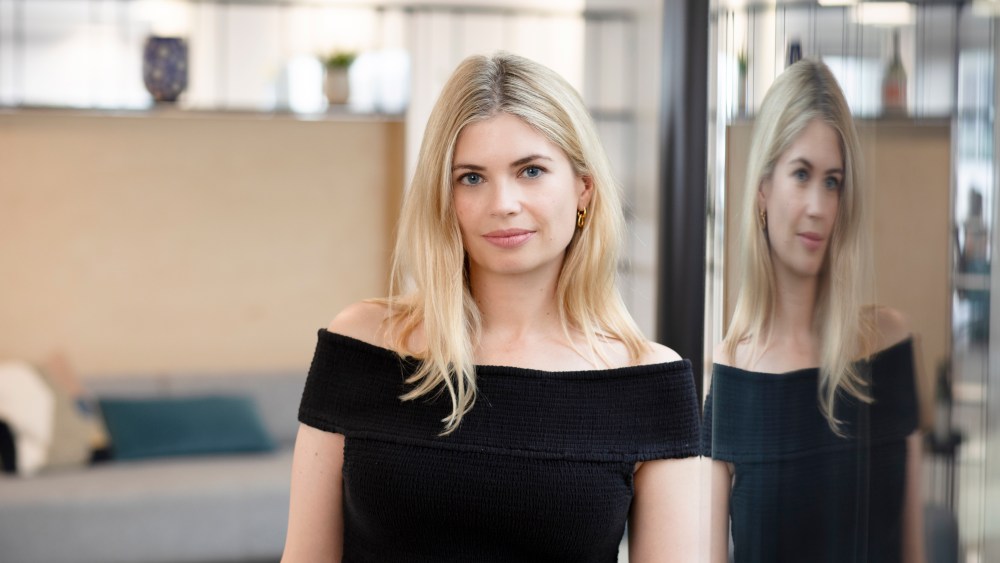LONDON — Lyst, the London-based shopping platform that has become a creditable source for the fashion industry on what’s trending with its quarterly brand and product rankings, has become profitable for the first time amid the recent downfall of several luxury e-tailers, according to the company’s chief executive officer Emma McFerran.
Ahead of the latest Lyst Index release later in the week, McFerran sat down with WWD, detailing how the company has been able to capture new opportunities from its 15 million monthly active users.
“We are delighted to share that we had our first full year of profitability. Given the market challenges in both tech and fashion, it is an achievement that we are truly proud of. Profitable growth is the next evolution for us,” McFerran said.
According to Companies House filings, Lyst registered a loss of 23.75 million pounds in 2023, and a loss of 27.6 million pounds in 2022, respectively. Lyst didn’t reveal exactly how much profit it had made for the year ending March 31, 2024. That number will be disclosed to the public next January.
You May Also Like
Scale matters for the company’s journey to profitability, McFerran said. Since joining the company in 2014 she has risen through the ranks in various roles, and was promoted to her current position from chief operating officer in 2022, when company founder Chris Morton relinquished the CEO title and moved into the executive chairman role.
“We have so much data and we can see what’s going on in real-time. And being a platform with no inventory and no logistics, it does allow us to adapt and lean into areas where we think we can find growth. We have an agility to the platform that we have to continue to drive as we go. And that’s what’s going to set us up to continue to grow profitably,” McFerran said.
She added that Lyst has the largest fashion assortment with almost 10 million in-stock products on the platform. It partners with 17,000 brands and retailers and exceeded gross merchandise value of 600 million pounds in the last financial year.
The U.S., the U.K. and the rest of Europe are three of its biggest markets among the 190 countries and regions it serves, representing 30 percent, 25 percent and 20 percent of the business, respectively.

With the downfall of major competitors like Farfetch, which was sold to South Korea’s Coupang at a knockdown price last December, McFerran said Lyst is able to retain customers and partners because it stays focused on its fashion identity and its target audience.
“Our position is always about this mission that we have for our customers and our fashion partners. What sets us apart is that deep obsession with the category,” she said.
“I relate to the customer we build for because I am not an expert. Experts already have the answers. They already know how to find what they want. Whereas, there are a huge number of us who are passionate and joyful about the category but sometimes get a bit stuck about where to go and what to look for. There’s so much we could buy, but how do we decide what to buy? That is one of the things that I think the platform is trying to deal with,” she added.
The launch of the Lyst Index in 2019, meanwhile, helped the platform contextualize its data and gain credibility among the fashion community. On several occasions the rankings predicted the financial performance of certain brands, such as the soaring popularity of Miu Miu in recent quarters.
“Because we are this data-led offering that sits on his absolute wealth of behavioral customer data, that allows us to create better services for the customer, but also on the partner side. It helps us to understand the industry, understand trends, and what’s going on,” McFerran said.
“From that, we’ve expanded beyond just an e-commerce platform into a content and editorial offering. We have this unique perspective on the industry because of the data that we have. The industry loves the index but so do the customers. They love to understand through our data lens, what’s happening in the industry,” she added.
On the business-to-business front, in addition to helping sell products on the platform, Lyst partners with brands to better tell their stories to its audience. It offers bespoke data insights, showing where Lyst sees opportunities and how brands can perform better with optimized imagery, keywords and tags.
McFerran’s bet on mobile also paid off during the COVID-19 pandemic. She said Lyst was the number-one premium fashion app in the U.K. and the U.S. at the time, with more than 20 million downloads in two years.

The company, situated not far from the Tower of London, has a “small but mighty” team of 150 people, the majority of whom are in product engineering and data, according to McFerran.
The company is an early adopter of machine learning and has since fully embraced the power of artificial intelligence to increase productivity.
In the area of personalization, for example, McFerran said: “We’ve always had algorithms driven by machine learning. But now through AI, we can use both the imagery and the text descriptions to unlock the catalogue, with things like semantic search. We’ve seen huge jumps in our number, even up to as much as 20 percent increases in conversion rates through improving personalizations using AI.”
But the company is also cautious about not getting too excited by tech gimmicks. After all, the consumer comes to Lyst for the latest, inspirational fashion.
“There’ll be all sorts of use cases for different types of AI technology. But I think for me, it’s got to be about getting the customer to fall in love with fashion online again. To some extent, online fashion shopping has become a little bit too functional and we lost sight of personality. But this is an aesthetic and cultural vertical. We are excited about fashion. We love it. We’re passionate. We think about it all the time. I think that through AI and how we predict and how we’re going to take users on deep discovery journeys, we want to make it fun, interesting and interactive,” McFerran said.
With regard to what’s next after its profitability milestone, McFerran said Lyst is considering expanding into the beauty vertical, which has “a lovely adjacency to high-end fashion shoppers.” It is also looking to expand into emerging markets like the Middle East and Asia and do more to serve its customers across Europe.
In 2021, Lyst revealed a pre-IPO round of financing of $85 million, led by funds managed by Fidelity International, Novator Capital, Giano Capital and C4 Ventures, coming in alongside existing investors including Draper Esprit, Steadfast Financial, 14W, Accel, Balderton Capital, Venrex and LVMH Moët Hennessy Louis Vuitton.
McFerran confessed that, given the tough macro environment, which to a large extent dictates the state of the IPO market, the company at this moment is not ready to raise money on the stock market.
“We’re very ambitious. We are continuing to grow profitably, and we will continue to take market share. I think we’ve got more international expansion on the horizon. So when we hit those milestones, and when the market is in the right place, then we will assess what’s next from the business from a corporate perspective,” McFerran added.



